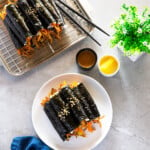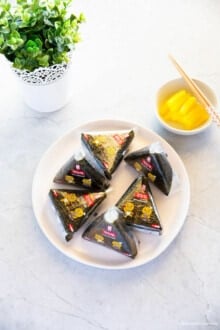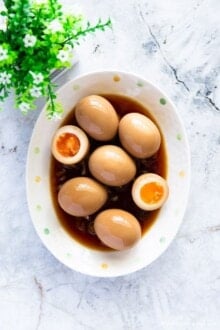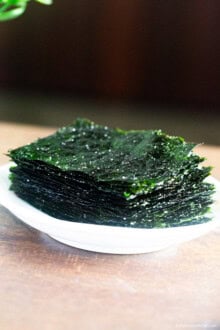Immerse yourself in the enticing world of mini kimbap, a delightful Korean snack that’s sure to have you craving more. These bite-sized morsels, also known as mayak or ggoma kimbap, feature a selection of 3 to 4 fillings, ranging from vegetables, meat, and eggs, all combined with seasoned short grain rice and dried seaweed.
What’s the outcome? An irresistible medley of flavors and textures that make mini kimbap the perfect choice for a quick lunch or an on-the-go treat. Try making it at home today!
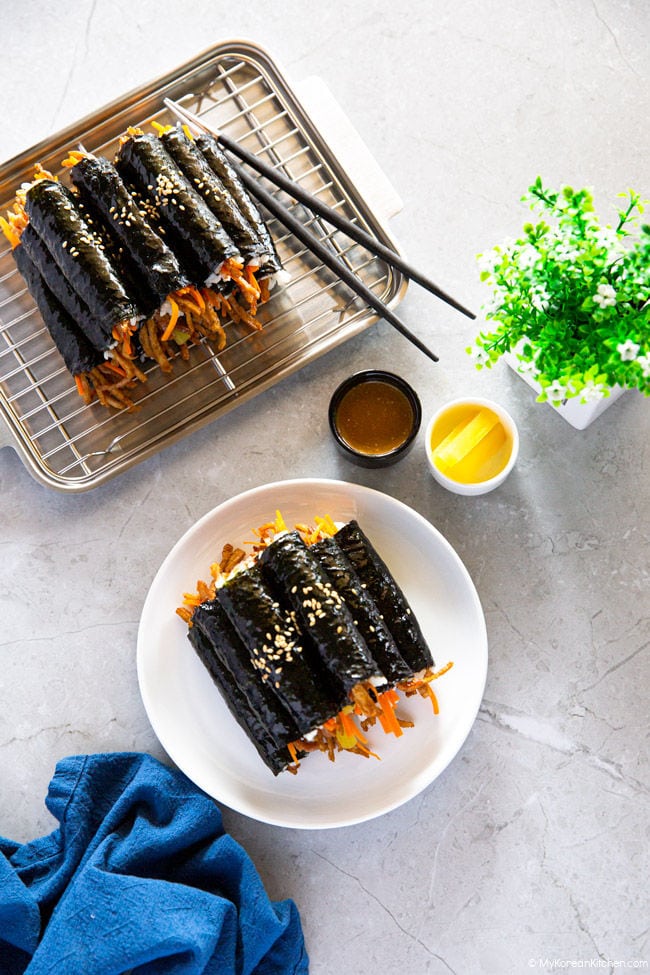
What is Mini Kimbap
Mini kimbap (also spelled mini gimbap, 미니김밥) is a popular Korean snack that consists of bite-sized rolls filled with deliciously seasoned rice, fresh vegetables, and your preferred protein option, all wrapped snugly in a crisp layer of seaweed. It’s a colorful and flavorful treat.
These adorable little rice rolls are smaller than traditional kimbap, making them the perfect finger food for parties, picnics, or even just a quick snack on-the-go. In essence, it’s mini seaweed rice rolls.
Now let’s talk about the name mayak kimbap (also spelled mayak gimbap, 마약김밥). ”Mayak” translates to “narcotic” in English, but don’t worry – there aren’t any actual drugs involved! This nickname simply refers to the dangerously irresistible, addictive flavors of these mini kimbap rolls.
So you might be wondering, what’s the secret behind their irresistible charm? Apart from their cute, tiny size, it’s the mouthwatering sweet-umami mustard-vinegar dipping sauce that’ll have you craving for more.
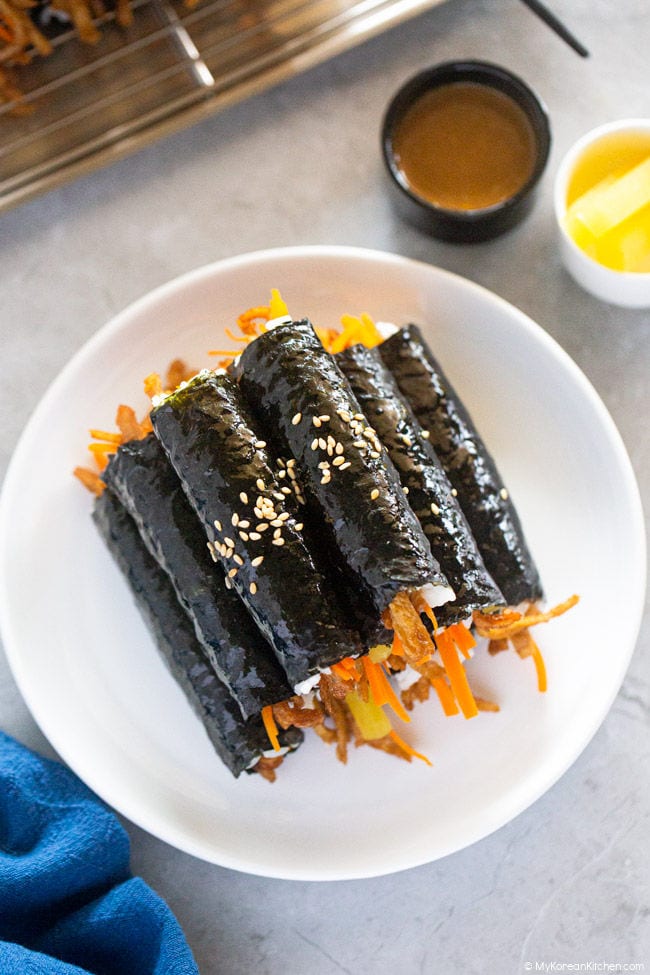
What’s in this magical concoction? Mayak kimbap dipping sauce is a delightful blend of Korean mustard, sugar, water, soy sauce, rice vinegar, and sometimes a touch of sesame oil. The flavors are perfectly balanced, with just the right amount of sweetness and tanginess to complement the delicious rolls. And don’t forget the final touch – a sprinkling of toasted sesame seeds to add a bit of crunch and nuttiness to every bite!
Serving with dipping sauce is not common for most Korean kimbap, but this is how you eat this mayak kimbap.
This kimbap is also known as ggoma kimbap (꼬마김밥) because of its petite size. Ggoma means a little kid in Korean.
Gwangjang Market, a bustling market in Seoul, is where this mini kimbap originated. This market is famous for its incredible array of mouth-watering street food, and mayak kimbap is undoubtedly one of its star attractions. Foodies from all over the world flock to this lively market just to get a taste of these irresistible little rolls. I once had to line up for about one hour! The market is also famous for Bindaetteok (mung bean pancake).

Mini Kimbap Fillings
When it comes to ingredients, the classic mayak kimbap features a simple trio: carrot, spinach, and danmuji (yellow pickled radish). However, modern twists on this addictive snack often include up to four ingredients for an extra burst of flavor.
With so many delicious options to choose from, here are some of the most popular choices to consider.
Classic Veggies: Can’t go wrong with a colorful mix of fresh, thinly sliced carrots, cucumber, or pickled radish (danmuji). Blanched and seasoned spinach is also a great option. These classic ingredients add a delightful crunch and tanginess to every bite!
Savory Egg: Pan-fried beaten eggs, cut into thin strips, can add a touch of richness, creaminess, and fluffiness that pairs perfectly with the other ingredients.
Fish Cake Sheets: Seasoned julienned Korean fish cakes contribute a delightful meaty texture and umami-rich flavor, making them my preferred protein choice. Their addition enhances the already addictive nature of mayak kimbap, elevating it to new heights.
Other Proteins: Deep-fried tofu pouches (yubu, also known as inari-age in Japanese) or Korean ham are also popular choices. They contribute a pleasing meaty texture and savory flavor to the dish.
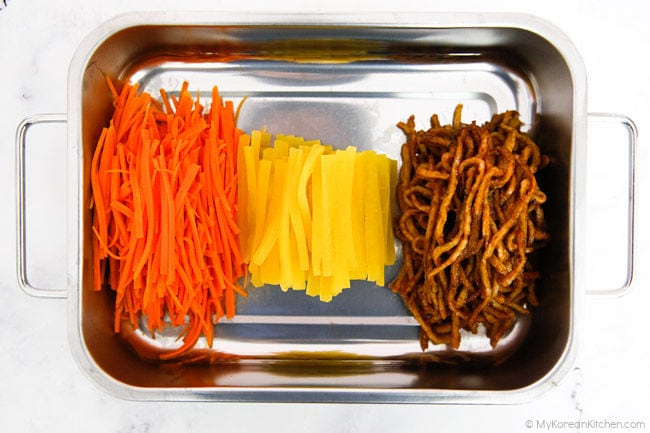
How To Store Kimbap
Although these mini seaweed rice rolls are small and have fewer ingredients, they can be time-consuming to prepare due to the increased number of rolls.
If you’re planning ahead, you can make them up to six hours in advance and store them in an airtight container. Be sure to refrigerate them to prevent the rice from drying out.
Storing it for longer than that could significantly alter the texture of the rice, making it dry and hardened, which may negatively impact its taste compared to when it was first cooked.

Other Kimbap / Gimbap Recipes You Might Like
If you’re a fan of kimbap, there are plenty of delicious variations to explore. From classic tuna to bulgogi and inventive combinations like triangle kimbap, trying various kimbap recipes will keep you excited and satisfied!
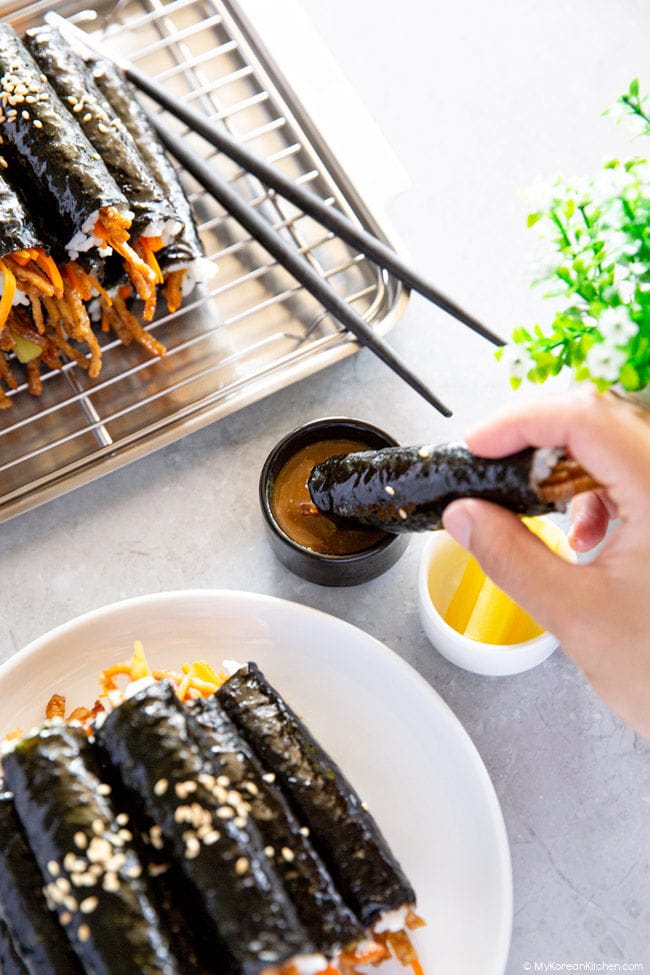
Ingredients for Mini Kimbap
Main
- 4 cups cooked rice, short or medium grain (e.g. sushi rice, yield from 2 cups uncooked short grain rice – measured with the cup provided with a rice cooker.)
- 1 Tbsp sesame oil
- 1/2 tsp fine salt
- 140g / 5 ounces yellow pickled radish (danmuji) – julienned, cut to the length of an index finger
- 1 large (150g / 5.3 ounces) carrot, julienned, cut to the length of an index finger
- 2 fish cake sheets (100g / 3.5 ounces), julienned, cut to the length of an index finger
- 1.5 Tbsp soy sauce, regular
- 1/2 Tbsp brown sugar
- 2 Tbsp rice wine (mirin)
- 6 dried seaweed sheets (nori)
Kimbap Sauce (Mustard Sauce)
- 2 Tbsp Korean hot mustard
- 1 Tbsp sugar
- 2 Tbsp water
- 1.5 Tbsp soy sauce, regular
- 1/2 Tbsp vinegar
- 1/2 Tbsp toasted sesame seeds, finely ground using a mortar and pestle
* 1 Tbsp = 15 ml, 1 cup = 250 ml
How to Make Mini Kimbap
1. Combine mustard, sugar, and water in a bowl, stirring until the mustard dissolves. Add soy sauce and vinegar, mixing well. Set aside. Grind sesame seeds into a fine powder using a spice grinder or mortar and pestle. Stir the ground seeds into the sauce mixture, ensuring they’re evenly distributed. Set aside.
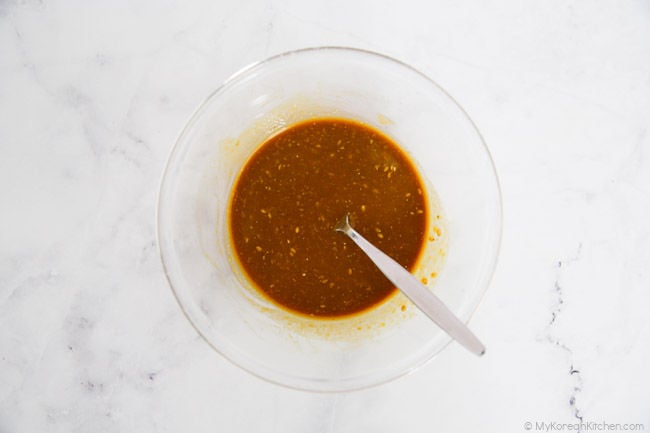
2. In a mixing bowl, combine the rice with sesame oil and salt. Using a rice paddle, mix well to ensure even seasoning. Allow the rice to cool while preparing the remaining ingredients.
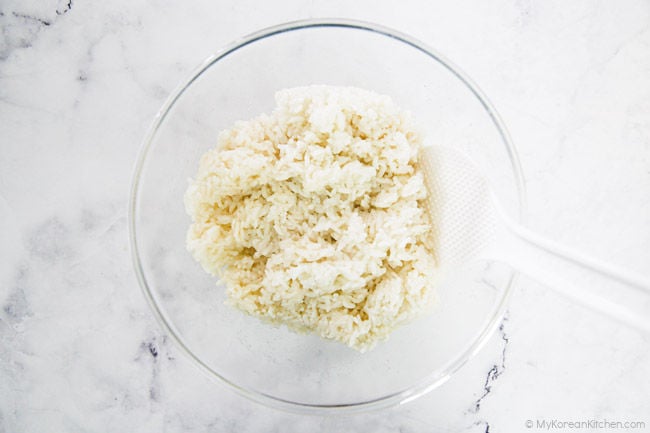
3. Heat up a pan and pour in some oil, then add the carrots. Stir-fry them over medium-high heat for 2-3 minutes until they soften slightly. Season with a sprinkle of salt.

4. (If reusing the pan from Step 3, wipe it clean with a paper towel first.) Heat up the pan, pour in some oil, and add the fish cakes.
Stir-fry them over medium-high heat for a minute. Add the soy sauce, brown sugar, and mirin to the pan and stir well. Continue cooking for an additional 2 minutes, or until the fish cakes are fully cooked.
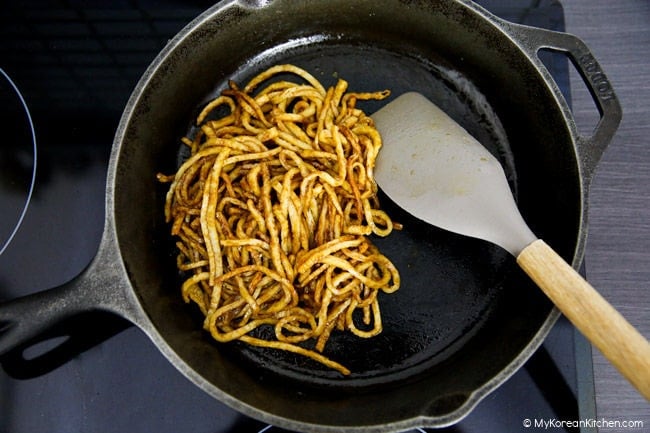
5. Cut the seaweed sheets in half lengthwise. Then, stack all the seaweed pieces on top of each other and cut them in half crosswise. This will give you evenly-cut, quarter-sized seaweed pieces.
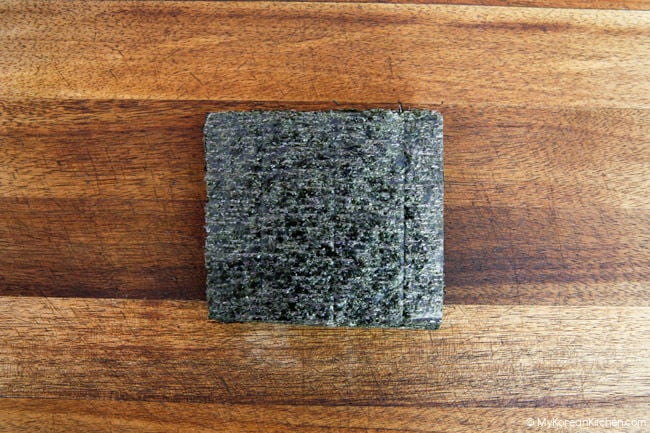
6. Place a quarter sheet of dried seaweed on a cutting board, shiny side down and the shorter side facing you. Evenly spread the rice over the seaweed, leaving about 1.5 cm of space on the edge farthest from you. (Tip: Wearing food-handling gloves on your left hand and using a rice paddle with your right hand can speed up the rolling process and prevent rice from sticking to your hands.)
Arrange the prepared ingredients on top of the rice near you. (Tip: For each roll, I recommend using seven to eight julienned carrots, two to three pickled radishes, and three fish cakes. Be sure to distribute the ingredients evenly so you don’t run out.)
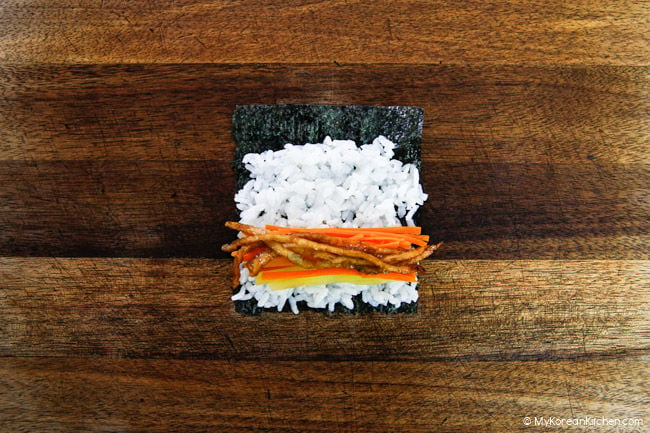
7. To make the kimbap roll, first lift the bottom edge of the seaweed with both hands. Then, roll the seaweed over the filling, away from you, tucking in the filling with your fingers as you go. Finally, use your fingertips to brush some water onto the reserved space, or stick some rice onto it to glue down the roll.

8. Repeat steps 6 and 7 for the remaining ingredients. You can also prepare them in batches by placing four seaweed sheets on a work surface, spreading rice on each one, adding the filling, and then rolling them up. This can improve your efficiency.

9. Stack the finished rolls on a cutting board or large plate. Brush the outside of the roll with a little bit of sesame oil for extra flavor and shine. When all the rolls are coated, sprinkle some sesame seeds on them (optional). Serve with the prepared dipping sauce.
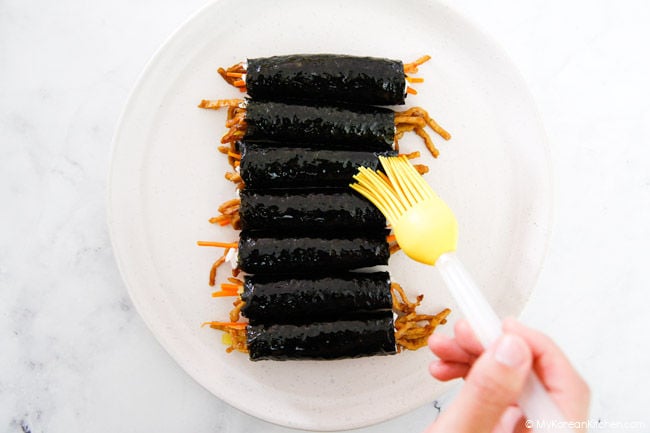
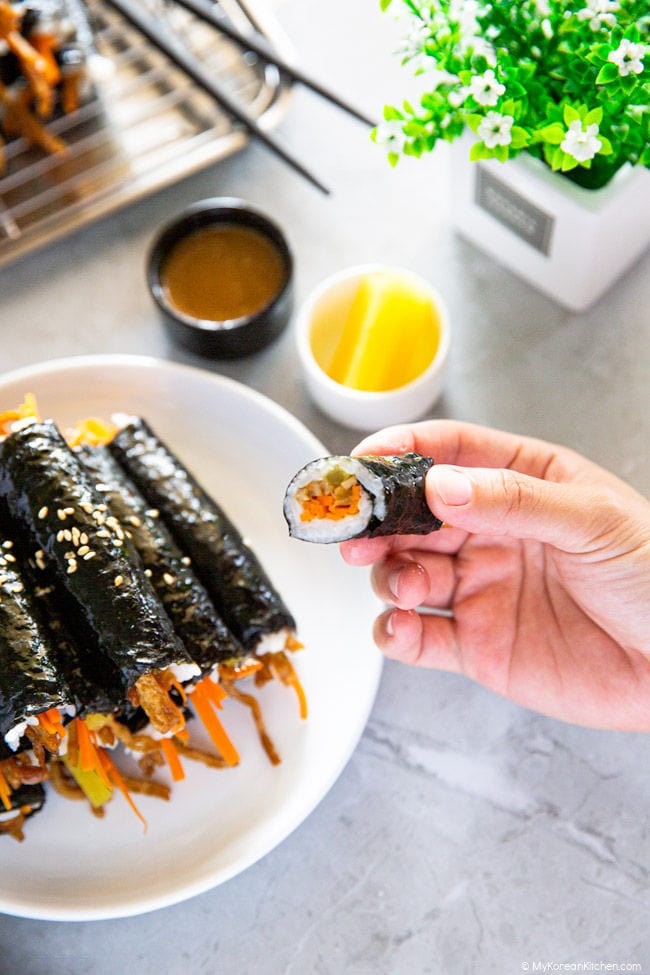
Love Korean food? Browse even more delicious ideas from my collection of easy Korean recipes. Don’t forget to subscribe to my newsletter to stay updated on new recipes, what the MKK community is cooking, and K-Dramas!
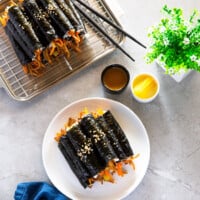
Mini Kimbap (Mayak Kimbap)
Ingredients
MAIN
- 4 cups cooked rice , short or medium grain (e.g. sushi rice, yield from 2 cups uncooked short grain rice – measured with the cup provided with a rice cooker.)
- 1 Tbsp sesame oil
- 1/2 tsp fine salt
- 140 g yellow pickled radish (danmuji), (5 ounces), julienned, cut to the length of an index finger
- 1 carrot (150g / 5.3 ounces), julienned, cut to the length of an index finger
- 2 sheets fish cake (100g / 3.5 ounces), julienned, cut to the length of an index finger
- 1.5 Tbsp soy sauce , regular
- 1/2 Tbsp brown sugar
- 2 Tbsp rice wine (mirin)
- 6 sheets dried seaweed (nori)
KIMBAP SAUCE (MUSTARD SAUCE)
- 2 Tbsp Korean hot mustard
- 1 Tbsp sugar
- 2 Tbsp water
- 1.5 Tbsp soy sauce , regular
- 1/2 Tbsp vinegar
- 1/2 Tbsp toasted sesame seeds , finely ground using a mortar and pestle
Instructions
- Combine mustard, sugar, and water in a bowl, stirring until the mustard dissolves. Add soy sauce and vinegar, mixing well. Set aside. Grind sesame seeds into a fine powder using a spice grinder or mortar and pestle. Stir the ground seeds into the sauce mixture, ensuring they’re evenly distributed. Set aside.
- In a mixing bowl, combine the rice with sesame oil and salt. Using a rice paddle, mix well to ensure even seasoning. Allow the rice to cool while preparing the remaining ingredients.
- Heat up a pan and pour in some oil, then add the carrots. Stir-fry them over medium-high heat for 2-3 minutes until they soften slightly. Season with a sprinkle of salt.
- (If reusing the pan from Step 3, wipe it clean with a paper towel first.) Heat up the pan, pour in some oil, and add the fish cakes.Stir-fry them over medium-high heat for a minute. Add the soy sauce, brown sugar, and mirin to the pan and stir well. Continue cooking for an additional 2 minutes, or until the fish cakes are fully cooked.
- Cut the seaweed sheets in half lengthwise. Then, stack all the seaweed pieces on top of each other and cut them in half crosswise. This will give you evenly-cut, quarter-sized seaweed pieces.
- Place a quarter sheet of dried seaweed on a cutting board, shiny side down and the shorter side facing you. Evenly spread the rice over the seaweed, leaving about 1.5 cm of space on the edge farthest from you. (Tip: Wearing food-handling gloves on your left hand and using a rice paddle with your right hand can speed up the rolling process and prevent rice from sticking to your hands.) Arrange the prepared ingredients on top of the rice near you. (Tip: For each roll, I recommend using seven to eight julienned carrots, two to three pickled radishes, and three fish cakes. Be sure to distribute the ingredients evenly so you don’t run out.)
- To make the kimbap roll, first lift the bottom edge of the seaweed with both hands. Then, roll the seaweed over the filling, away from you, tucking in the filling with your fingers as you go. Finally, use your fingertips to brush some water onto the reserved space, or stick some rice onto it to glue down the roll.
- Repeat steps 6 and 7 for the remaining ingredients. You can also prepare them in batches by placing four seaweed sheets on a work surface, spreading rice on each one, adding the filling, and then rolling them up. This can improve your efficiency.
- Stack the finished rolls on a cutting board or large plate. Brush the outside of the roll with a little bit of sesame oil for extra flavor and shine. When all the rolls are coated, sprinkle some sesame seeds on them (optional). Serve with the prepared dipping sauce.
Notes
Nutrition Info (per serving)
The nutrition information shown is an estimate provided by an online nutrition calculator. It should not be considered a substitute for a professional nutritionist’s advice.
